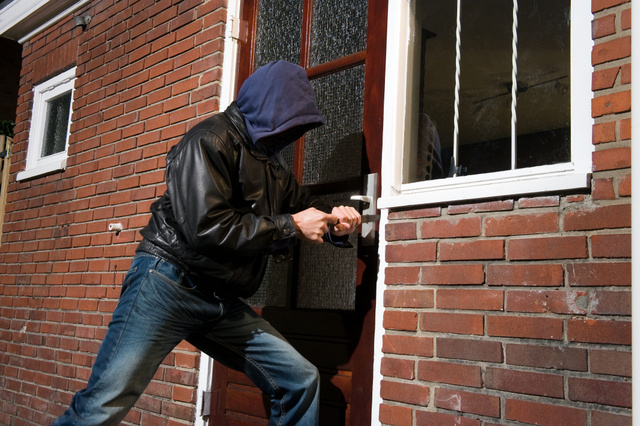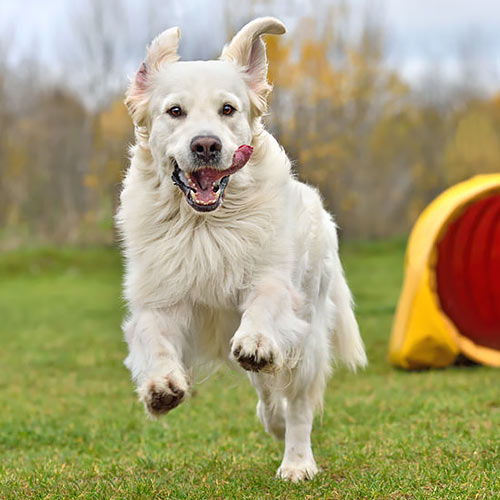People have a lot of misconceptions and preconceived ideas about personal protection dog training (PPD). Some of it is based on fact but muddled by fiction or feelings. Additionally, there is an internet world packed with information – some of it is good and trustworthy…and some is not. So, we’ll give a brief attempt to clear up the subject. Furthermore, some so-called “trainers” propagate false information in order to prey on peoples’ fears, and you have a recipe for disinformation. Hopefully, we can educate earnest people who simply aren’t aware as well as dispel myths about the subject.
#1 Protection Dogs are Attack Dogs
For a dog to be a real protection dog, he/she has to have some rather strong tendencies (professionally called “drives”). Some will misinterpret these drives as aggression. We admit that some dogs used in protection work are truly aggressive but that need not be the case. A typical protection dog is friendly and trustworthy around family. They aren’t child-killers. They aren’t looking for someone to attack and bite. Rather, they are very balanced dogs which have what it takes to allow the toddler to use him as a pillow but then stand his ground to defend that child against an attacker. It’s balance. Protection dogs, for the vast majority of needs, are balanced. Neither shy or aggressive. Neither looking to attack or bloodthirsty. Ninety-nine percent of the time they will be the perfect friend. In the event his services are needed, he still has that one percent that enables him to defend his human.
#2 An Untrained Dog will Protect Me
We’ve all heard stories of Fido defending the child from an attacker or barking like a madman when a stranger confronts his lady while jogging down the trail. However, that’s the exception – not the rule. Most breeds of dogs that will be used in protection work will be naturally protective. However, when an event takes place that merits canine intervention, the dog will not know what to do. He is motivated by love but hindered by ignorance. He’ll not know how to handle the stress of the moment. Some dogs have even been known to bite their own humans because they don’t know what to do in that stressful situation.
Except in very rare instances, only trained protection dogs will know what to do when his/her human is assaulted or home broken into. If properly trained, they will have seen the scenario many times over. They will have been trained what to do and when and to whom. They’ll know how to handle the stress of an attacker waving a stick, or being kicked by the intruder. Why? They’ve seen it a hundred times before the “event” ever happens. They’ve worked under gunfire and other stressors. They’ve been finely tuned by a knowledgeable and professional trainer who tweaks the dog’s strengths and strengthens his weaknesses. The dog can then respond with split second timing and brilliant accuracy.
#3 Any German Shepherd can be a Protection Dog
Wrong! The same goes for any other breed. There are good dogs and bad dogs in every breed, and mutts too. Some people mistakenly buy a low-quality pup thinking, “Well, he’s a Malinois, Doberman, Rottweiler. He’s a protection dog.” Unfortunately we see many people who are very disappointed when their dog doesn’t meet their expectations.
It takes a good, solid dog to be a protection dog. The breed isn’t the main concern – even mixed breeds can be PPDs, as long as they meet the stringent criteria. You’ll need a dog from proven working lines to be a good PPD. Show lines just do not consistently produce dogs that are able to work [Hello, we just saved you thousands of dollars, if you’ll pay attention to those last sentences]. You may be tempted to buy a show-line dog because they’re pretty. But if you’re interested in true protection, you had better stick with a working dog. Pretty dogs with no brains strike out when it comes to work. Show dogs are bred for the show ring. Working dogs are bred to work. PPDs are working dogs.
#4 I can Raise my own Protection Dog from Puppyhood.
Very few people can. There is a common misunderstanding that when my pup reaches a certain age, he can be thrown into the work and expect to excel. Wrong again. PPDs need a lot of preparation before they’re old enough to begin formal protection training. They have drives to be developed, confidence that needs built, kindergarten bite-work that needs nurtured, muscles that need conditioned, and a TON of socialization in areas that most people don’t even think of. All of this needs to be done before he is given the task of protection training. If you are to have a strong and dependable working dog, you will have to do ALOT of work with him/her before they are a year old. Most people lack that knowledge and commitment to get it done within the window of opportunity and get it done right without hindering the pup’s education.
Conifer Canine offers a puppy development class for pups aged 8 weeks to 12 months. See our Protection page for more information.
#5 Protection Dogs are too Expensive
Expensive, yes. Too expensive, not really. There is a lot of expense involved in the proper training of a PPD. A truckload of time is invested, expensive equipment must be used, and there are many behind-the-scenes needs/expenses that go into the making of a good PPD. Backyard training is cheap, but so are the results. A person who knows what he is doing in the training of a PPD will invest his time, skill, sweat, strength and sometimes his skin for the good of the dog and for the benefit of the person who purchases him. If/when your home is broken into, you’ll want to know in that moment that your trainer didn’t skimp on your dog’s training. And, you don’t work for free, neither should your trainer 🙂
For more information, view our site’s Personal Protection Dog training page and our Working Dog category for more Blog posts. Be assured we can provide quality protection dogs as well as solid, competent training for those dogs.


